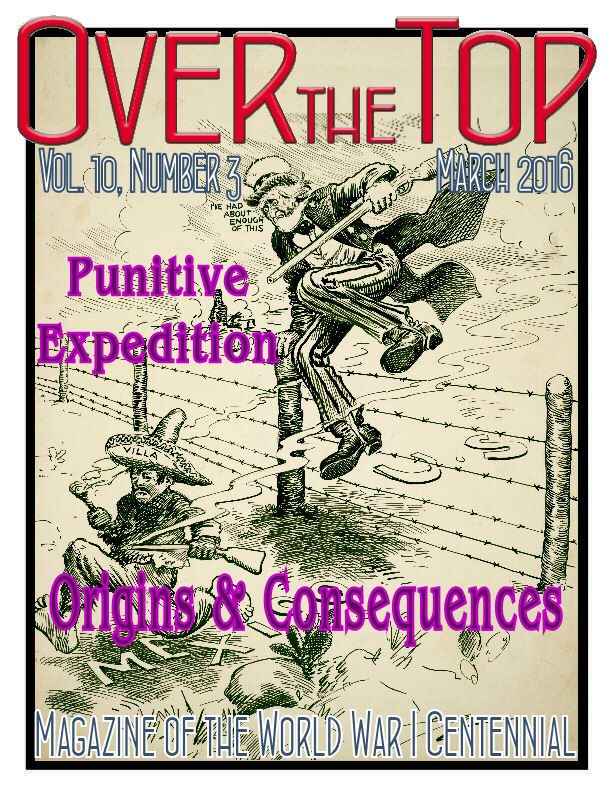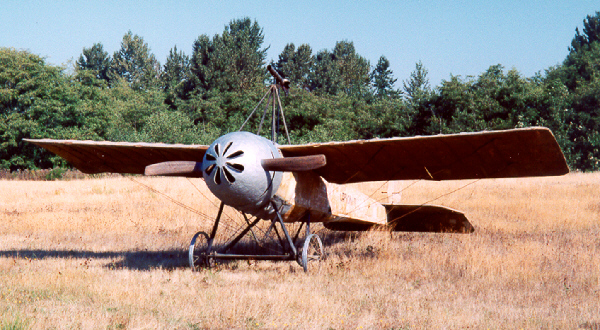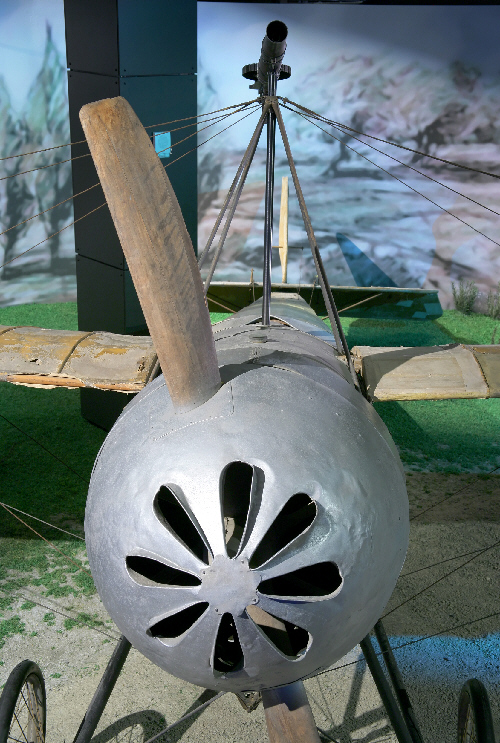
March
2016 |
 |
|
|


1916 and the Great War's Awful Reputation
Something I am sure I share with our regular readers is the experience of periodically encountering someone who finds our interest in the First World War baffling. Sometimes this means members of the family. At our (happily infrequent) gatherings I have one female relative who never passes on the opportunity to ask in front of the assembled group, "How can you spend so much time on something so STUPID?" Another, an in-law, now dearly departed, used to regularly kick in, "You know, you picked the only war, you can't make any money at!" [Sadly, he had "gone west" by the time I actually got a check from the U.S. Postal Service for consulting work on a commemorative stamp issue. But, he probably would have laughed at its amount anyway.]
Moving on, I've tried many responses to such skeptics over the years, from invoking George Kennan's "Seminal event of the 20th century" to my own view, "It's just bloody fascinating," followed by lots of specific examples. Alas, nothing seems to make a dent on their attitudes. Recently I've tried to turn the tables and have probed for the source of their disdain for the events of 1914-1918. First, of course, one usually has to deal with the modern [or post-modern] abysmal lack of appreciation for the past, the flushing of all of human experience down some enormous 1984-ish memory hole. However, I've learned to force myself to tiptoe around that sore point, fighting off my own tendency to rant about the cult of political correctness, the enduring sins of the 1960s' New Left, and the dumbing down of American education. My recent attempts go something like this composite conversation:
MH: What do you find particularly off-putting about WWI?
XX: Trench warfare. It was bad, bad, bad. . . And the generals were idiots and didn't care how many men they lost.
MH: Do you know of an episode that demonstrates that?
XX: Yes, there was the time when a whole British army went over the top and got machine gunned down in no-man's-land. It was the worst day in England's history.
MH: Well, what you are describing there is the first day of the Battle of the Somme in 1916, and it was, indeed, a terrible day. Are there any similar cases you might have heard about? The war lasted over four years, after all.
XX: The French had some battle [Verdun] that was so bad, the next time the generals ordered them to attack [Nivelle Offensive] they baaed like sheep and refused to go. And then there was Flanders [Passchendaele].
MH: What about Flanders?
XX: They had to fight in the MUD! Mud is bad, bad, bad. . . You can drown in mud. Did you know that?
MH: Well, yes. I think I do.
XX: And what about the GAS?
MH: (At this point, since gas is bad, bad, bad, I usually surrender.)
Note that, despite my best efforts, I still inevitably find myself on the defensive in such exchanges. I've really got to work on my technique. Maybe I should watch more of the presidential debates. There is one odd aspect of these probes, though, that I've tried to reflect here. The events of 1916, most specifically the Somme, but also including Verdun — reinforced in vague fashion by the Nivelle and Passchendaele offensives of 1917 — define the Great War for many folk. None of the events of the other years or fronts of the war seem to have made any impression. This appears to me to be especially true for people who are adverse to studying history or consider the past irrelevant to their lives. Nonetheless, certain facts about the war are selected and they are magnified and distorted beyond recognition. Curiouser and curiouser. MH

|
2016 Events
Don't forget the rededication of the Lafayette Escadrille Memorial outside Paris on 20 April. See our January issue for details HERE.
The increased interest in the Great War generated by the Centennial commemorations has led to an explosion of local events and ongoing displays of art and artifacts from the war. The Centennial Commission provides the best list of local, regional, and state-level World War I presentations. Click HERE to view the current list.
|
|
Verdun: March 1916
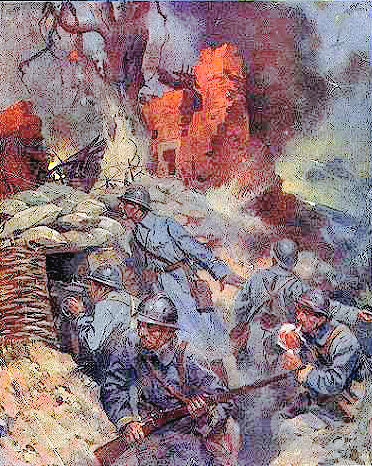
By 1 March 1916 German Forces Had Advanced South from Bois Caures, Captured Several Villages and Fort Douaumont, and Discovered the French, too, Had Artillery. Joffre, meanwhile, had Appointed Pétain.

Centennial/Centenary Websites
As the 100th anniversary of the Great War unfolds, I have watched an abundance of websites that are dedicated to remembering the Centennial and follow the war day by day. In some ways, they are competitors to our publications at Worldwar1.com, but our emphasis has been on the American aspects of the war. Down below we show the icons for the best sites on the U.S. experience. However, there are other sites that look at 1914-1918 more broadly or on other nations, and, frankly, some of them are just outstanding and I think you ought to know about them. Here are some of the standouts.
 World War I in Photos from Atlantic Magazine
World War I in Photos from Atlantic Magazine
 Imperial War Museum: First World War
Imperial War Museum: First World War
 Cartographie 1914-1918
Cartographie 1914-1918
 Eric Sass's Centennial Essays on Mental Floss
Eric Sass's Centennial Essays on Mental Floss
 Dying Splendor of the Old World
Dying Splendor of the Old World
 Facebook: Great War Centenary
Facebook: Great War Centenary
 Toronto Star World War I Encyclopedia
Toronto Star World War I Encyclopedia
 New Zealand's First World War Centenary
New Zealand's First World War Centenary

Musical Doughboy
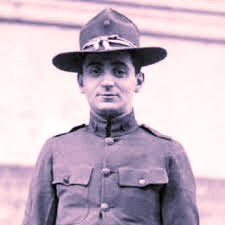
Sgt. Irving Berlin
Sgt. Irving Berlin, a draftee who was stationed at Camp Upton, Long Island for the duration of the war, was also one of the most prolific and popular songwriters of the 20th century. You probably knew that he put together a musical revue for the troops called Yip, Yip, Yaphank! and that one song he composed for the musical was a little too somber for the times so it wasn't included. However, when a second World War seemed imminent, "God Bless America" was finally released and became the former sergeant's most famous song.
Berlin wrote many other wartime songs, though. His hits included: "For Your Country and My Country," "I'm Gonna Pin My Medal on the Girl I Left Behind," "I've Got My Captain Working for Me Now," and "Oh! How I Hate to Get Up in the Morning." There was another of his songs from the period that memorably found a second life. The over-the-top corny "Smile and Show Your Dimple" got re-lyricked for a 1930s musical as "Easter Parade." You've probably heard of that later version.

A Zeppelin Crew Member Speaks:
Our nerves are ruined by mistreatment. If anyone should
say that he was not haunted by visions of burning
airships, then he would be a braggart. But nobody
makes this assertion; everyone has the courage to confess
his dreams and thoughts.
Pitt Klein, German Navy Airship L31
|

|

U.S. Centennial Organizations & Resources
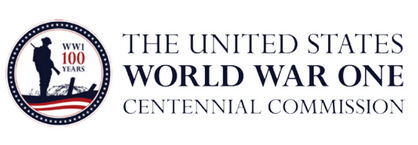
worldwar-1centennial.org/
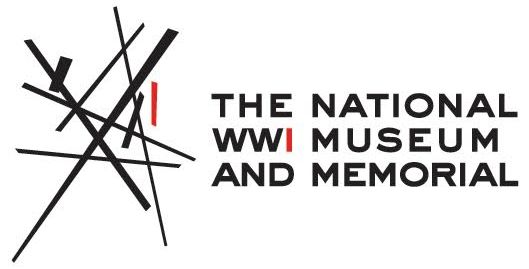
theworldwar.org/
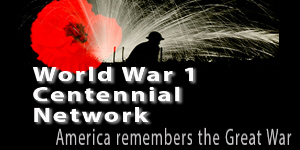
www.ww1-centennial.org/

www.firstdivisionmuseum.org/

www.abmc.gov/
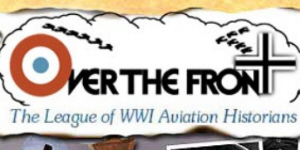
www.overthefront.com/

www.nationalmuseum.af.mil/
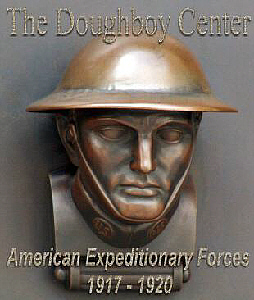
www.worldwar1.com/dbc/

facebook.com/wwiinventory

wisconsinhistory.org/

www.uswarmemorials.org/

www.macarthurmemorial.org/

www.saving-hallowed-ground.org/
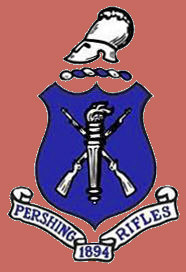
www.theprgroup.org/
Support Worldwar1.com's Centennial Effort
Shop at Amazon.com
|
The Centennial Ticker
Exciting Centennial Projects
MacArthur Memorial's
"In Their Shoes" Program:
Designed as an educational and hands-on research activity for young people, the Memorial's downloadable document has a terrific amount of information on 32 of the war's early participants, from the well-known to forgotten conscripts. Two examples are shown below. The document can be downloaded HERE.
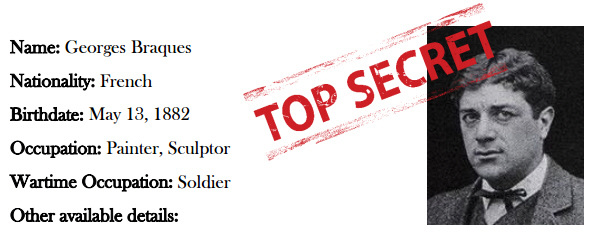
Georges Braques was a modern artist who painted in the Cubist style. Before the
war, he was involved with an extensive network of artists including Pablo Picasso. As
a member of the French army reserves, he was called up for duty when France
mobilized on 1 August 1914. Pablo Picasso was one of the friends who saw him off
at the railroad station when he departed for military service. Braque served as a
sergeant in an infantry regiment in the early days of the war.
Afterward:
 Suffers a severe head wound in combat in 1915. He is temporarily blinded. Suffers a severe head wound in combat in 1915. He is temporarily blinded.
 Relieved of military service, he returns to art in 1916. [He gave up Cubism and became more conventional with his art.] Relieved of military service, he returns to art in 1916. [He gave up Cubism and became more conventional with his art.]
 [But] Remains well known today as a French modern artist [But] Remains well known today as a French modern artist
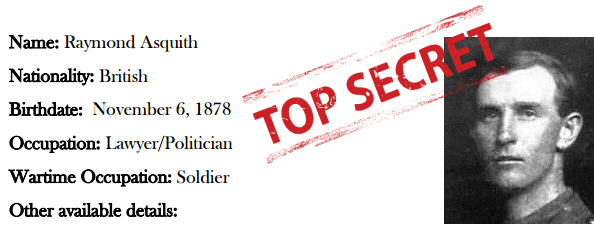
Raymond Asquith was the eldest son of British prime minister H. H. Asquith. Prior
to the war he worked as a lawyer investigating the sinking of the Titanic. When the
war started, he was commissioned as a second lieutenant in a London Regiment. In
1915 he was transferred to the 3rd Battalion, Grenadier Guards. Despite being
given a staff job behind the lines, he requested to be returned to active duty with his
battalion, a request that was granted right before the Battle of the Somme.
Afterward:
 Asquith was killed in action on 15 September 1916. Asquith was killed in action on 15 September 1916.
 While leading part of his company at the Battle of Flers-Courcelette, he was
shot in the chest and died while being carried back to British lines. While leading part of his company at the Battle of Flers-Courcelette, he was
shot in the chest and died while being carried back to British lines.
Historic continuity with the past is not a duty, it is only a necessity. — Oliver Wendell Holmes, Jr.
The National WWI Museum's
Living History Corps
The Living History Volunteer Corps at the National World War I Museum and Memorial (pictured below) is a group of professional and amateur historians that examine and educate the public on the human dimension of the Great War thorough research, militaria collecting and living history. Living history incorporates historical tools, activities, and dress into an interactive presentation that seeks to give observers and participants a sense of stepping back in time.
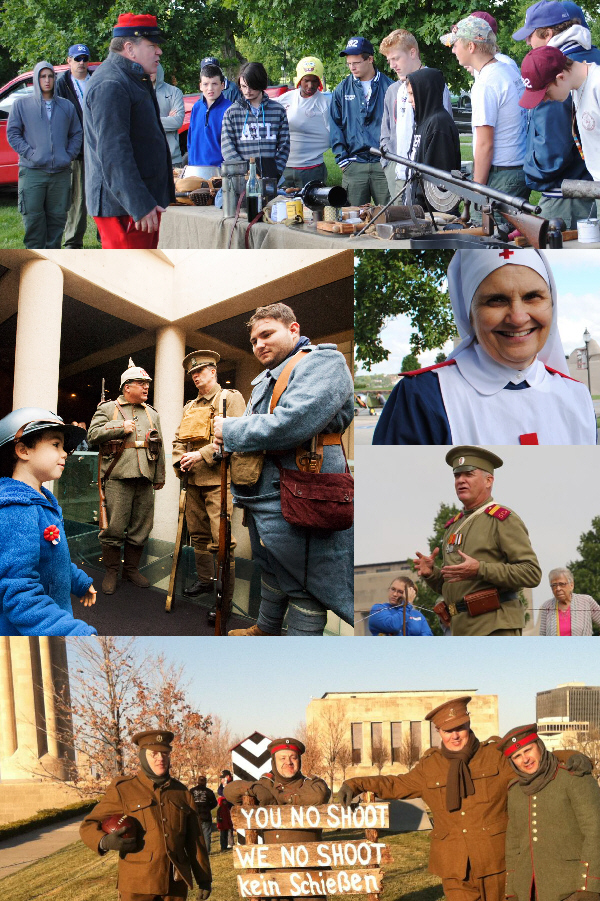
At the Museum, Living History Volunteer Corps members engage the public through a variety of programs and initiatives at the museum, including monthly “Day in the Life” demonstrations on Sundays surrounding crucial World War I topics and an annual encampment/demonstration event on the exterior grounds of the museum. The corps has events scheduled in each month through the end of 2016. See their schedule HERE.
History is a guide to navigation in perilous times.
— David McCullough
The U.S. Air Force National Museum's
Centennial 100 Website
Wow! And I was worried that my old service had fallen behind in the Centennial commemoration sweepstakes. In the past year the USAF and many of its veterans like WWI commissioner Jerry Hester have taken the lead in getting the spectacular Lafayette Escadrille Memorial outside Paris restored. More recently the Air Force Museum in Ohio has added a major Centennial subsection to their website and it's terrific. Aircraft, aviators, designers, technology, and operations are all abundantly covered. Like all great websites, which are combination libraries and virtual museums, you can dive in and find some new discovery — you might have had no notion of previously — every time you visit. Today, I was checking out the "Artifacts" section and I found these items:
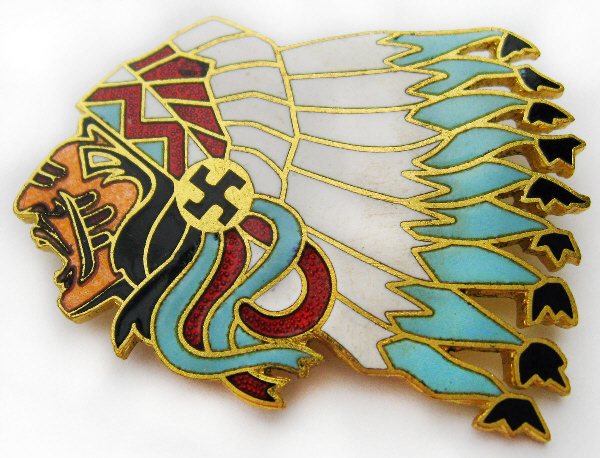
This Lafayette Escadrille pin belonged to Charles Heave "Carl" Dolan Jr., who in 1915 was the 31st volunteer of the Lafayette Escadrille (Escadrille N. 124), which was a group of 38 Americans who volunteered to join the French Flying Corps before the United States entered World War I. Dolan, along with the majority of the Lafayette Escadrille members, transferred into the United States Air Service as the 103rd Aero Squadron on 18 February 1918. Dolan was recalled to U.S. military service during the Korean War with the rank of colonel to serve as the Assistant to the Chief of Maintenance of the Air Force at the Air Force Materiel Command Headquarters at Wright-Patterson AFB, Ohio. (Donated by the Dolan Estate)
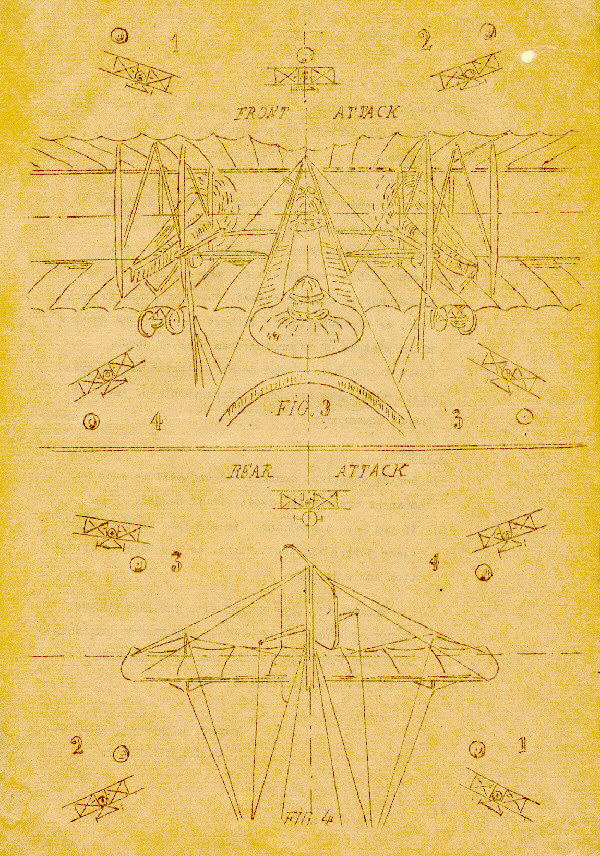
This sketch is from a newsletter, written for aircraft gunners and observers, and describes the proper tactics of defensive shooting against enemy pursuit aircraft. The document was written in October 1917, by Lt. Pierre Sainflou of the French Aeronautique Militaire. Translated into English, these lessons were part of the core training received by American observers in France during World War I. This newsletter returned home with Lt. Harry F. Slarb, an observer with 9th Aero Squadron.
Don't miss this great resource. It can be visited HERE
|
|

Trouble on the Mexican Border
March 1916
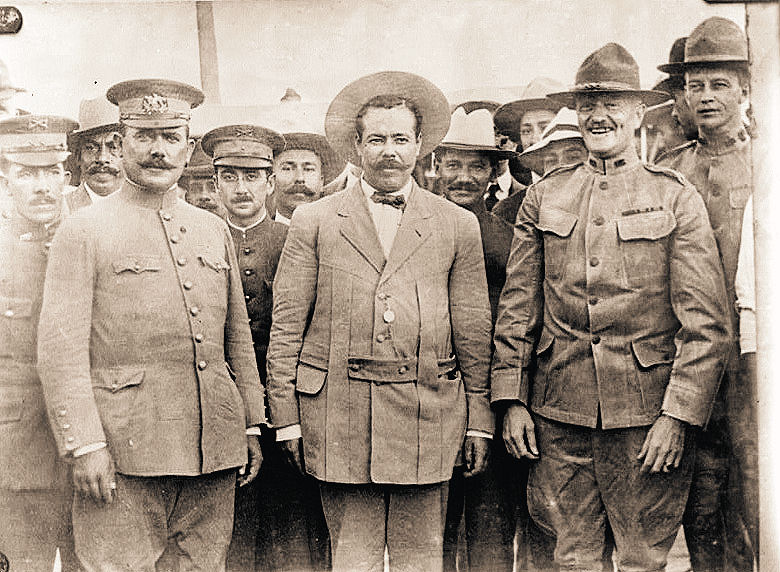
Happier Times: 26 August 1914 at Fort Bliss, Texas
Federal General Alvaro Obergon, Pancho Villa, and General Pershing
Excerpted from: "The United States Armed Forces and the Mexican Punitive Expedition" by Mitchell Yockelson of the National Archives and Records Administration.
One hundred years ago, the bandit Francisco "Pancho" Villa raided Columbus, New Mexico. The attack on American interests and citizens was an offshoot of the Mexican Revolution, which began in 1910, when a rebel faction led by Francisco I. Madero, Jr., attempted to overthrow Mexico's dictator of more than 30 years, President Porfirio Diaz. Many steps later, the United States and six Latin American nations officially recognized the Carranza government on 19 October 1915, a direct insult to Pancho Villa [once supported by the U.S.] and his followers, who had earlier parted ways with Carranza. Feeling betrayed, the Villistas set forth on a course of retaliation directed mainly at Americans. In one instance, Villa's irregulars assassinated 17 U.S. citizens aboard a train traveling from Chihuahua City to the Cusi Mine at Santa Isabel, Chihuahua. Although this act infuriated the American public, it was the Villistas' next attack, the raid on Columbus, New Mexico, that caused the U.S. government to seek retribution.
With approximately 485 men, known as Villistas, Villa had attacked the border town on 9 March 1916. According to War Department reports, ten American officers and soldiers were killed, two officers and five soldiers wounded, eight civilians killed, and two wounded. The Mexican irregulars' losses numbered approximately 100 killed, with seven wounded and captured. From 16 March 1916, to 14 February 1917, an expeditionary force of more than 14,000 regular army troops under the command of Brig. Gen. John J. "Black Jack" Pershing operated in northern Mexico "in pursuit of Villa with the single objective of capturing him and putting a stop to his forays." Another 140,000 regular army and National Guard troops patrolled the vast border between Mexico and the United States to discourage further raids.
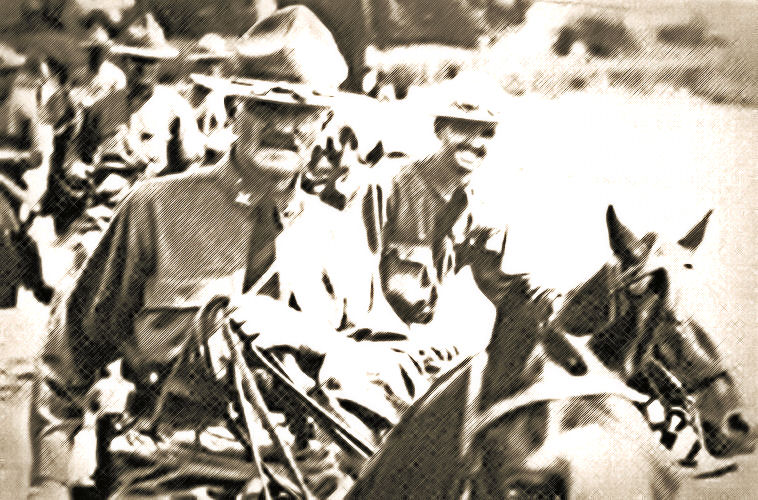
Pershing Leads His Force Across the Rio Grande
Despite its failure to capture Pancho Villa, the Mexican Punitive Expedition can be deemed a success. Secretary of War Baker praised the efforts of Pershing and his men by stating that "its objective, of course was the capture of Villa, if that could be accomplished, but its real purpose was a display of the power of the United States into a country disturbed beyond control of the constituted authorities of the Republic of Mexico as a means of controlling lawless aggregations of bandits and preventing attacks by them across the international frontier. This purpose is fully and finally accomplished."
Most importantly, the Mexican Punitive Expedition provided military training experience for the eleven thousand regular soldiers who made up the expedition. Pershing's experience during the Punitive Expedition and the death of Funston on 19 February 1917, made him the obvious choice as commander of the American Expeditionary Forces during World War I. Many of the same men who served with Pershing in Mexico accompanied him to France.
|
|

Announcing Our 2016 Centennial Battlefield Tour Schedule

Room Still Available on Both of Our 2016 Tours
2 - 10 May 2016: Verdun In-Depth
Includes Key Sites on the Argonne, St. Mihiel Flanks and the Voie Sacrée
14 - 21 August 2016: The Somme In-Depth
10% off ($320) if you pay by 2 February 2016, 5% if you send your deposit by that date
The full brochure covering both trips and registration details can now be downloaded at:
(http://www.worldwar1.com/pdf/ValorTours_2016Flyer.pdf)
|
|
|

|

New Books on the AEF —
Fresh Insights on America at War
Thanks to the Centennial there has been a surge in books on the AEF. Here are four of the best we have received so far. Each excels at telling the story at a different operational level. What they share is outstanding research of previously untapped sources and skillful writing that tie together the story of important participants with the confused details of 20th-century battle.
Mitchell Yockelson's Forty Seven Days. . . is the best work so far on America's greatest battle of the war — and arguably of all time — the Meuse-Argonne Offensive. Stephen Harris's Rock of the Marne. . . covers a single brigade level operation of great importance and legend, but has been previously somewhat overlooked. Terrence Finnegan's A Delicate Affair. . . includes a totally engaging and unique study of the little understood Seicheprey trench raid against units of the 26th "Yankee" Division in April 1918. In Days of Perfect Hell. . . author Peter Belmonte also looks at the Meuse-Argonne Offensive, but his viewpoint is through the eyes of the men of the 26th Infantry Regiment of the 1st Division. There are other books on the American military in our pipeline that we will be sharing with you in the future. But these four works are all excellent. If you read any, or all of them, you will have a better appreciation of the effort and sacrifices of the Doughboys.
|
Reload page if any book covers fail to appear.
|
|

A Different Tale:
The Tsar's Army on the Caucasus Front
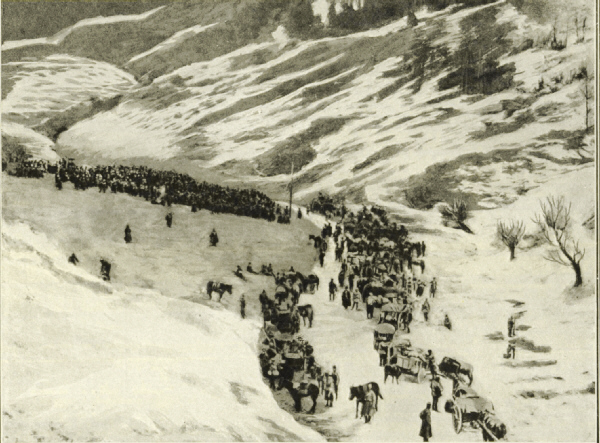
Mobile Russian Forces on the Move in the Caucasus
An assessment of the operations of the Caucasus Army from November 1914 to November 1916 produces a very different picture from that usually derived from studies of the Imperial Army's battles in World War I. Unlike Central Europe, the record in Transcaucasia was one of a string of major victories, only occasionally disrupted by minor reverses. The extent of these victories is clear from statistics that demonstrate that of the 400,000 casualties suffered by the Turks between November 1915 and March 1917, no less than 300,000 were lost in fighting the Russians.
Some may suggest that this record of victories reflects the fact that conditions were somewhat different in the Caucasus from those in Europe, or that the Turks were less worthy opponents than the Germans. Indeed, it is true that the Pan-Turkic and Pan-Islamic movements provided, at least initially, an ideological element that was lacking elsewhere in Europe. Furthermore, this at times also fueled guerrilla movements (Adzhar, Laz, and Kurd) that were largely absent in Europe during World War I. Yet all this only added to the complexities of warfare in Transcaucasia.

General Yudenich
|
Overall, after 1915 the difficulties faced by General Nikolai Yudenich (arguably the most successful Russian commander of the Great War) and his subordinates were surprisingly similar to those facing their colleagues elsewhere. Trench warfare was as prevalent in the Caucasus as in Europe, and the Caucasus Front was geographically constricted in a manner not unlike the Anglo-French Western Front. Yet, as in the Alps and Balkans, the associated problems were magnified by the defensive advantages provided by the rugged, broken terrain. Bitter winters with heavy snows and freezing temperatures had a similar impact. So did the miserable communications (which Yudenich worked manfully to improve) that plagued soldiers at all levels in this narrow and constricted, mountainous theater. As for "Johnnie Turk," he was easily as tenacious, skillful, and courageous as his "Hun" counterpart, as the British learned to their cost at Kut and Gallipoli. Apart from the visionary Enver Pasha, the same is true of many Turkish officers, who, in many cases, were seconded by experienced German advisors.
The similarities in styles of warfare practiced in Europe and in the Caucasus are paralleled by similar mistakes. Unlike the many breakthroughs attempted by generals elsewhere, those of Yudenich were uniformly successful, even if the front was sometimes too narrow to permit a rapid and complete exploitation of his tactical victory (e.g., at Koprukoy in early 1916). At the same time, his choices in this regard often were constrained by the mountainous terrain, an excuse not always so readily available to generals on the more open European fronts. Equally impressive is the similarity in his preparation and conduct of such operations as those at Koprukoy and Erzurum with the methods employed by Brusilov later in 1916.
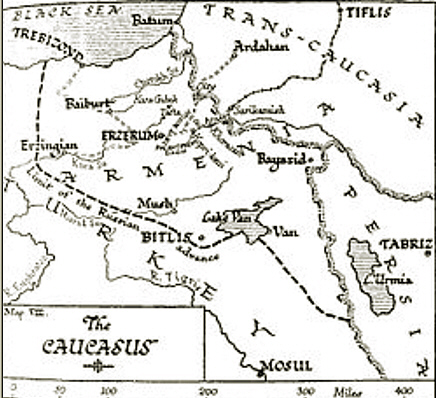
The Caucasus Front, 1914–1917
If nothing else, its officers in Caucasus are convincing proof of the Imperial Army's ability to produce officers fully capable of providing leadership, of waging modern war, and of pioneering new techniques, such as the combined naval-land amphibious operations employed along the coast of Trebizond. And if Yudenich's staff on occasion badly mishandled their intelligence data, this problem was not confined to the Caucasus command alone.
There was evidence of war weariness in all armies by January 1917, but in the end it was the Ottoman Caucasus armies that seemed on the verge of disintegration. Despite its "sideshow" status and the limits this imposed on its activities, Yudenich's Caucasus Army had achieved much more than had been expected of it. In the end, however, the effects of the February Revolution saved Turkey in 1917 from its final humiliation at the Russians' hand and deprived the latter of all the gains won at such costs by Yudenich and his Caucasus Army.
Sources: From a paper deliverd by Professor David R. Jones at the 2001 National Seminar in Philadelphia
|
|
|
Thanks to each and every one of you who has contributed material for this issue. Until our next issue, your editor, Mike Hanlon. |
|
 (Or send it to a friend)
(Or send it to a friend)
|
Design by Shannon Niel
Content © Michael E. Hanlon
|
|
|











